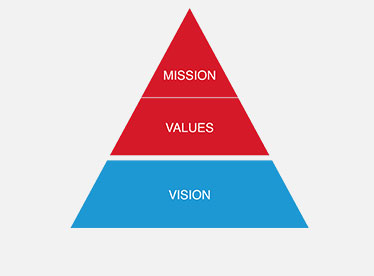-
Products
-
Transportation & Mobility Solutions
Transportation & Mobility Solutions
At Hitachi, we engineer industry-leading transportation and mobility solutions by leveraging decades of knowledge and using high-quality automotive material and components.
-
Energy Solutions
Energy Solutions
We believe the only solution for fulfilling the growing power requirements of industries and society is through a comprehensive portfolio of sustainable energy solutions and delivering innovative high-efficiency energy systems.
-
IT Infrastructure Services
IT Infrastructure Services
Hitachi’s state-of-the-art IT products and services are known to streamline business processes which result in better productivity and a higher return on investment (ROI).
-
Social Infrastructure: Industrial Products
Social Infrastructure: Industrial Products
Within the industrial sector, Hitachi is consistently delivering superior components and services, including industrial and automation solutions, useful in manufacturing facilities.
-
Healthcare & Life Sciences
Healthcare & Life Sciences
At Hitachi, we believe that healthcare innovation is crucial to a society’s advancement. A strong healthcare sector is often considered an inseparable element of a developed society.
-
Scientific Research & Laboratory Equipments
Scientific Research & Laboratory Equipments
Hitachi focuses on extensive research and development, transformative technology, and systems innovation to unfold new possibilities and create new value through scientific endeavors that strengthen the connection between science and social progress.
-
Smart Audio Visual Products
Smart Audio Visual Products
Since 1956, Hitachi audio visual products have provided state of the art solutions to consumers all over the world. It has been our pleasure to design competitive products at the lowest possible prices while maintaining our industry-leading quality standards for your comfort and enjoyment.
-
View All Products
Hitachi Products & Solutions
Hitachi, a technology leader in the U.S., offers a diverse set of products and solutions, and breakthrough technologies for smart manufacturing, green energy and mobility solutions that empower governments, businesses, and communities.
-
Transportation & Mobility Solutions
- Social Innovation Solutions
-
About Us
-
Hitachi in the U.S.A.
Hitachi in the U.S.A.
Discover information about the Hitachi group network across the Americas, upcoming events and sustainability endeavours, CSR policies, and corporate government relations.
-
About Hitachi Group
About Hitachi Group
Explore our leadership team, investor relations, environmental vision, and sustainability goals. Learn how Hitachi is leveraging its research & development capabilities for social innovation across industry verticals.
-
Hitachi in the U.S.A.
- News Releases
- Case Studies
- Careers
- R&D
Strategies for Seven Businesses Toward Achieving “2012 Mid-term Management Plan” Goals
Tokyo, June 14, 2012 – Hitachi, Ltd. (TSE: 6501) today announced strategies for seven businesses toward achieving the goals of its “2012 Mid-term Management Plan.” On May 10, 2012, Hitachi announced a progress of its management plan “2012 Mid-term Management Plan,” which is three year plan until fiscal year ending March 31, 2013. The primary goals of this medium-term management plan are to promote "Growth Driven by Social Innovation Business" & "Solid Financial Base."
1. Infrastructure Systems Business*1
1-1. FY2011 Results, Forecasts for FY2012 and Targets for FY2015

*1: Simple sum of the figures for three companies: Hitachi, Ltd.’s Infrastructure Systems Company, Hitachi Plant Technologies, Ltd. and Hitachi Industrial Equipment Systems Co., Ltd. The Infrastructure Systems Company was established in April 2012 by reorganizing the former Information & Control Systems Company, the former Industrial & Social Infrastructure Systems Company and Hitachi Plant Technologies. A certain amount of revenues of the Infrastructure Systems Company are included in the Information & Telecommunication Systems Company, the Power Systems Company and the Rail Systems Company.
1-2. Business Policy
Drive Social Innovation Business, which provides social infrastructures supported by highly efficient and highly reliable IT technology
1-3. Business Strategy
(1) Provide total solutions globally for social infrastructure
[1] Infrastructure Solutions Business
• Provide optimized solutions and services for the supply and demand of energy
• Develop the business field of the smart city, including water treatment and mobility
[2] Plant Systems Business
• Pursue turnkey solutions, which including operation and services
• Enter growth fields through leveraging core technologies and components
• Provide plant information systems for supporting operation and management
[3] Components Business
• Strengthen product lineup of high reliability, high-speed and great capacity
• Strengthen top-runner products for saving energy and resources
(2) Developing into Global Growth Markets
[1] India

• Full-scale entry into the Indian market by establishing manufacturing, sales and service bases in growth markets
[2] China

• Expand total solutions business deeply rooted in China
(3)Strengthen Business Base
[1] Invest in key development areas
[2] Execute cost structure reforms “Hitachi Smart Transformation Project”
2. Power Systems Business
2-1. FY2011 Results, Forecasts for FY2012 and Targets for FY2015

2-2. Business Policy
The world market leader advancing the future global society with evolutionary energy technologies
2-3. Business Strategy
(1) Strengthen business base: Establish high-profit structure
(2) Build optimal business structure: Grow in global markets
(3) Expand in strategic business fields: Gas turbines, renewable energy, Air Quality Control Systems, etc.
(4) Bolster global R&D: Accelerate development of next-generation products
2-4. Strategy by Businesses
(1) Thermal Power Business

[1] Accelerate global business development
[2] Expand businesses with strategic products:Gas turbines, Air Quality Control Systems, etc.
(2) Nuclear Power Business

[1] Lend support for medium- to long-term countermeasures related to the Fukushima Nuclear Power Station
[2] Offer services for the nuclear power sector in Japan and develop next-generation reactors
[3] Step up development of overseas business
(3) Transmission & Distribution, Renewable Energy and Other Businesses

[1] Transmission & Distribution Business: Expand systems integration business
[2] Renewable energy business: Expand orders for wind and photovoltaic power generation systems, strengthen R&D
[3] Particle beam therapy business: Expand business through leading edge technologies and outstanding operational track records
3. Information & Telecommunication Systems Business
3-1. FY2011 Results, Forecasts for FY2012 and Targets for FY2015

3-2. Business Policy
Contribute to Social Innovation Business through collaborative creation with customers
3-3. Business Strategy
(1) Measures for Focused Businesses
[1] Highly Reliable Cloud Computing Business

• Expanded adoption by various business segments, categories and applications as well as adoption for large-scaled mission critical systems
• Strengthen and expand businesses in global markets
• Provide optimized solutions in cooperation with Hitachi group companies
[2] Smart Information Business

• Further develop the social infrastructure business
• Track records and know-hows through demonstration trials and utilize them in actual projects
• Develop and expand core solutions
[3] Big Data Related Business

• Promote collaborative business with customers and business partners
• Launch big data related services
• Develop platform products and technologies for supporting big data utilization
(2) Strengthen System Solutions Business
[1] Enhance business and improve efficiency through Group consolidated management
[2] Strengthen global business centered on Hitachi Consulting
(3) Strengthen Platform Business
[1] Bolster ability to meet customer needs through business structure integration
[2] Provide platform products for supporting focused areas
(4) Strengthen Business Bases
4. Rail Systems Business
4-1. FY2011 Results, Forecasts for FY2012 and Targets for FY2015

4-2. Business Policy
Accelerate globalization with technologies developed in Japan
4-3. Business Strategy
(1) Expand Sales
[1] Strengthen Japan business base
• Expand sales of rolling stock systems
• Maintain signaling/train control systems high market share
• Promote new businesses; hybrid traction systems, etc.
[2] Expand Overseas Business
• Expand maintenance business
• Expand sales focusing on signaling/train control systems compliant with European standards
• Promote total project integration
(2) Achieve Highly Profitable Structure
[1] Establish highly profitable business model by realigning product and business portfolios
[2] Generate earnings by standardizing products
(3) Promote Cost Structure Reform “Hitachi Smart Transformation Project”
5. Urban Planning and Development Systems Business
5-1. FY2011 Results, Forecasts for FY2012 and Targets for FY2015

5-2. Business Policy
Aim to expand business further, centered on overseas business
5-3. Business Strategy
(1) Elevator and Escalator business
FY2015 target: 12% global market share
[1] China
• Achieve top share in the new installation market by strengthening sales, service and manufacturing frameworks
• Raise brand value by developing and introducing the world’s No. 1 products
[2] Southeast Asia, India and the Middle East
Expand orders by expanding and enhancing product lineup
[3] New Regions
Penetrate new markets by cooperating with distributors and partners
[4] Japan
Expand elevator and escalator modernization business
(2) Building Facility Management (FM) business
Develop energy-saving business for whole buildings targeting small to medium-sized buildings
6. Automotive Systems Business
6-1. FY2011 Results, Forecasts for FY2012 and Targets for FY2015

*2: Customer bases that install automotive components in finished vehicles. This is different from overseas revenues in the consolidated basis.
6-2. Business Policy
Develop into a system supplier that leads the world in electronic control and electric drive technologies
6-3. Business Strategy
(1) Deepen global business operations
[1] Implement global strategic investments based on the concept of local production for local consumption
[2] Expand business with global customers
(2) Develop strong businesses
[1] Tighten focus on electronic control and electric drive products
[2] Create global-winning new products and technologies
(3) Strengthen global management foundation
[1] Strengthen global MONOZUKURI capabilities
[2] Strengthen global quality
[3] Reduce global costs
7. Consumer Business
7-1. FY2011 Results, Forecasts for FY2012 and Targets for FY2015 Hitachi Appliances, Inc.

7-2. Business Policy
As a corporation that contributes to the global environment, expand business by promoting “local production for local consumption” and excuting “premium strategy”
7-3. Business Strategy
(1) Expand business globally centered on “local production for local consumption” and “premium strategy”
[1]Air conditioning business

• Expand business leveraging existing base infrastructure
• Expand business leveraging home appliances sales infrastructure
• Enhancing in core markets
[2]Home appliance business

• Expand business mainly using manufacturing bases in Thailand
• Increase premium home appliances made in Japan
• Expand key components business
(2) Accelerate efforts to strengthen global business base with an aggressivecost strategy
(3) Business Expansion in New Environment Fields

*3: Revenues include revenues of Hitachi Consumer Marketing, Inc. (solar power generation systems, etc.)
• Launch new product businesses in new environment fields
(1) Strengthen MONOZUKURI capabilities
[1] Reform manufacturing processes in Japan and expand manufacturing capabilities overseas
[2] Develop modularization of control software
(2) Globalize value chain
[1] Localize and centralize manufacturing, sales and services
[2] Establish global IT management platform
(3) Develop global human resources, system engineers with IT and infrastructure expertise
2. Power Systems Business
(1) Reduce production cost: Globalize value chain
Increase utilization of overseas production bases (China, India, etc.)
(2) Reduce direct materials cost:
Expand overseas procurement and engineering
Double global procurement ratio at FY2015
(to over 70% in the thermal power business)
(3) Reduce indirect cost: Eliminate overlapping, distributed common tasks
3. Information & Telecommunication Systems Business
(1) Business Structure Reforms
[1] Optimize manufacturing venues and standardize product development
[2] Promote consolidated management by customer categories
(2) Fixed Expense Structure Reform
[1] Standardized work and IT system integration
[2] Promote shared services
(3) Variable Expense Structure Reform
[1] Expand use of offshore resources for software development
[2] Enhance centralized purchasing and global procurement
4. Rail Systems Business
(1) Reduce production cost
[1] Establish overseas manufacturing bases and operation centers outside of Japan, China and the U.K.
[2] Reduce costs by selecting optimal manufacturing bases
(2) Reduce direct materials cost
[1] Build global supply chain
[2] Strengthen engineered sourcing
(3) Reduce indirect cost
[1] Reduce indirect costs by centralizing and standardizing administrative and overlapping operations
[2] Actively utilize global human resources
5. Urban Planning and Development Systems Business
(1) Reduce production cost
[1] Localize production, allocate operations globally
[2] Promote less engineering
(2) Reduce direct materials cost
[1] Expand global procurement
[2] Develop products less susceptible to rising price of raw materials
(3) Reduce indirect cost
[1] Integrate core systems globally
[2] Reallocate business resources to growth fields
6. Automotive Systems Business
(1) Reduce production cost
Globalize and optimize the total value chain
(2) Reduce direct materials cost
[1] Lower costs through global procurement system
[2] Implement Value Engineering for Customers (VEC) activities for improving profits in strategic and underperforming businesses
[3] Improve procurement capabilities in products purchased centrally
(3) Reduce indirect cost
[1] Rebuild the globalization of core systems
[2] Centralize and standardize administrative operations, continue activities to reduce indirect expenses
7. Consumer Business (Hitachi Appliances, Inc.)
(1) Reduce production cost
Reform global Total Supply Chain Management (Europe, Brazil, etc.)
(2) Reduce direct materials cost
[1] Promote global VEC activities
[2] Promote global procurement
(3) Reduce indirect cost
[1] Centralize administrative operations
[2] Use shared services
Cautionary Statement
Certain statements found in this document may constitute “forward-looking statements” as defined in the U.S. Private Securities Litigation Reform Act of 1995. Such “forward-looking statements” reflect management’s current views with respect to certain future events and financial performance and include any statement that does not directly relate to any historical or current fact. Words such as “anticipate,” “believe,” “expect,” “estimate,” “forecast,” “intend,” “plan,” “project” and similar expressions which indicate future events and trends may identify “forward-looking statements.” Such statements are based on currently available information and are subject to various risks and uncertainties that could cause actual results to differ materially from those projected or implied in the “forward-looking statements” and from historical trends. Certain “forward-looking statements” are based upon current assumptions of future events which may not prove to be accurate. Undue reliance should not be placed on “forward-looking statements,” as such statements speak only as of the date of this document.
Factors that could cause actual results to differ materially from those projected or implied in any “forward-looking statement” and from historical trends include, but are not limited to:
• economic conditions, including consumer spending and plant and equipment investment in Hitachi’s major markets, particularly Japan, Asia, the United States and Europe, as well as levels of demand in the major industrial sectors Hitachi serves, including, without limitation, the information, electronics, automotive, construction and financial sectors;
• exchange rate fluctuations of the yen against other currencies in which Hitachi makes significant sales or in which Hitachi’s assets and liabilities are denominated, particularly against the U.S. dollar and the euro;
• uncertainty as to Hitachi’s ability to access, or access on favorable terms, liquidity or long-term financing;
• uncertainty as to general market price levels for equity securities, declines in which may require Hitachi to write down equity securities that it holds;
• the potential for significant losses on Hitachi’s investments in equity method affiliates;
• increased commoditization of information technology products and digital media-related products and intensifying price competition for such products, particularly in the Digital Media & Consumer Products segments;
• uncertainty as to Hitachi’s ability to continue to develop and market products that incorporate new technologies on a timely and cost-effective basis and to achieve market acceptance for such products;
• rapid technological innovation;
• the possibility of cost fluctuations during the lifetime of, or cancellation of, long-term contracts for which Hitachi uses the percentage-of-completion method to recognize revenue from sales;
• fluctuations in the price of raw materials including, without limitation, petroleum and other materials, such as copper, steel, aluminum, synthetic resins, rare metals and rare-earth minerals, or shortages of materials, parts and components;
• fluctuations in product demand and industry capacity;
• uncertainty as to Hitachi’s ability to implement measures to reduce the potential negative impact of fluctuations in product demand, exchange rates and/or price of raw materials or shortages of materials, parts and components;
• uncertainty as to Hitachi’s ability to achieve the anticipated benefits of its strategy to strengthen its Social Innovation Business;
• uncertainty as to the success of restructuring efforts to improve management efficiency by divesting or otherwise exiting underperforming businesses and to strengthen competitiveness and other cost reduction measures;
• general socioeconomic and political conditions and the regulatory and trade environment of countries where Hitachi conducts business, particularly Japan, Asia, the United States and Europe, including, without limitation, direct or indirect restrictions by other nations on imports and differences in commercial and business customs including, without limitation, contract terms and conditions and labor relations;
• uncertainty as to the success of alliances upon which Hitachi depends, some of which Hitachi may not control, with other corporations in the design and development of certain key products;
• uncertainty as to Hitachi’s access to, or ability to protect, certain intellectual property rights, particularly those related to electronics and data processing technologies;
• uncertainty as to the outcome of litigation, regulatory investigations and other legal proceedings of which the Company, its subsidiaries or its equity method affiliates have become or may become parties;
• the possibility of incurring expenses resulting from any defects in products or services of Hitachi;
• the possibility of disruption of Hitachi’s operations by earthquakes, tsunamis or other natural disasters;
• uncertainty as to Hitachi’s ability to maintain the integrity of its information systems, as well as Hitachi’s ability to protect its confidential information or that of its customers;
• uncertainty as to the accuracy of key assumptions Hitachi uses to evaluate its significant employee benefit-related costs; and
• uncertainty as to Hitachi’s ability to attract and retain skilled personnel.
The factors listed above are not all-inclusive and are in addition to other factors contained in other materials published by Hitachi.
Hitachi, Ltd., (NYSE: HIT / TSE: 6501), headquartered in Tokyo, Japan, is a leading global electronics company with approximately 360,000 employees worldwide. Fiscal 2010 (ended March 31, 2011) consolidated revenues totaled 9,315 billion yen ($112.2 billion). Hitachi will focus more than ever on the Social Innovation Business, which includes information and telecommunication systems, power systems, environmental, industrial and transportation systems, and social and urban systems, as well as the sophisticated materials and key devices that support them. For more information on Hitachi, please visit the company's website at http://www.hitachi.com.
Japan
Masahiro Takahashi
Hitachi, Ltd.
+81-3-5208-9323
masahiro.takahashi.rh@hitachi.com
U.S.
Mickey Takeuchi
Hitachi America, Ltd.
+1-914-333-2987






